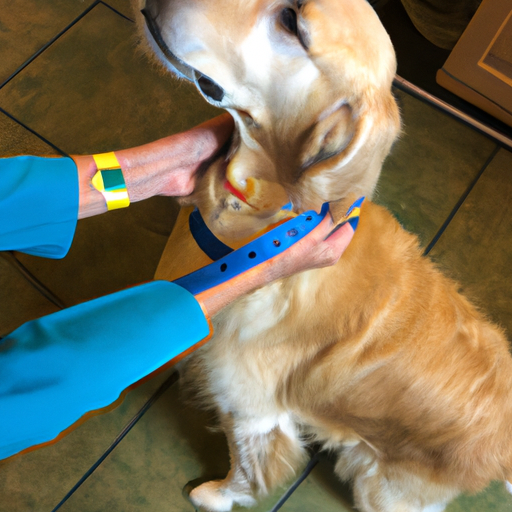As a devoted dog owner, the comfort and safety of your pet is undoubtedly a top priority. An important aspect of this is ensuring your dog’s collar is well-fitted and not causing any discomfort or harm. But how tight should my dog’s collar be? This article will provide you with a comprehensive guide to determine the perfect collar fit for your furry friend.
Table of Contents
- Importance of a Well-Fitted Collar
- How to Measure Your Dog’s Neck Size
- Standards for a Proper Collar Fit
- Different Types of Collars
- Frequently Asked Questions
Key Takeaways
- The collar should not be too tight or too loose.
- You should be able to insert two fingers between the collar and your dog’s neck.
- Regularly checking the collar for wear and tear is crucial.
- The type of collar you choose depends on your dog’s size, breed, and behavior.
Importance of a Well-Fitted Collar
A dog collar primarily serves two purposes: identification and control. However, if not fitted correctly, a collar can cause discomfort, injury, and even pose a risk to your pet’s life. Therefore, it’s important to ensure your dog’s collar is neither too tight nor too loose.
An overly tight collar can cause skin irritation, difficulty breathing, and in severe cases, can lead to injury to the trachea and esophagus. On the other hand, a loose collar can easily slip off, posing a risk of your dog getting lost or injured.
How to Measure Your Dog’s Neck Size
Before purchasing a collar, you will need to measure your dog’s neck. This can be done using a flexible measuring tape.
- Wrap the measuring tape around your dog’s neck where the collar normally sits.
- Record the measurement in inches or centimeters.
- Add an extra 1-2 inches or 2-3 centimeters to the measurement for a comfortable fit.
Note: Always check the collar’s manufacturer guidelines for sizing, as sizes can vary between brands.
Standards for a Proper Collar Fit
As a rule of thumb, a properly fitted collar allows you to slip two fingers between the collar and your dog’s neck. This ensures that the collar is not too tight to cause discomfort, but not too loose to slip off.
Regularly check the collar for signs of wear and tear and replace it when necessary. Also, consider your dog’s growth and weight changes, especially if you have a puppy or a dog who is prone to gaining or losing weight.
Different Types of Collars
There are various types of collars available, and the best one for your dog depends on their size, breed, and behavior.
- Flat Collars: These are the most common and suitable for all dogs. They are adjustable and can carry identification tags.
- Martingale Collars: Ideal for dogs with narrow heads like Greyhounds. They tighten when a dog pulls to prevent escape.
- Head Collars: Suitable for strong, high-energy dogs that might jump or pull. This article provides more information on head collars.
- Harnesses: Recommended for short-nosed breeds. This post discusses more about harnesses.
For more detailed information about different types of collars, click here.
Frequently Asked Questions
Q: How often should I check my dog’s collar fit?
A: Ideally, you should check your dog’s collar fit every week. This becomes even more important if you have a rapidly growing puppy or a dog that is gaining/losing weight.
Q: Can a tight collar cause coughing in dogs?
A: Yes, a tight collar can cause coughing in dogs. If your dog is coughing or gagging after wearing a collar, it might be too tight.
Q: Can I leave my dog’s collar on all the time?
A: While it’s generally safe to leave the collar on your dog, it’s recommended to remove it when your dog is at home to prevent possible accidents, especially if they are left unsupervised.
Q: How do I introduce my dog to a new collar?
A: Introduce the new collar gradually. Let your dog sniff and interact with it first. Then, put it on for short periods, gradually increasing the duration.
In conclusion, finding the right collar fit for your dog is a critical aspect of their well-being. It requires a balance – not too tight to cause discomfort or harm, not too loose to slip off. Remember, a well-fitted collar means a happy and safe dog. Happy pet parenting!



